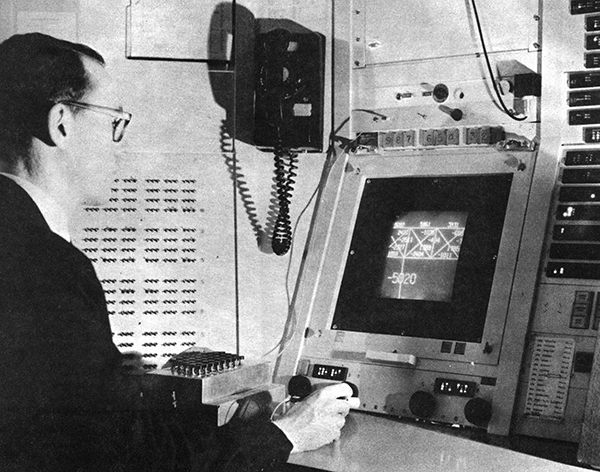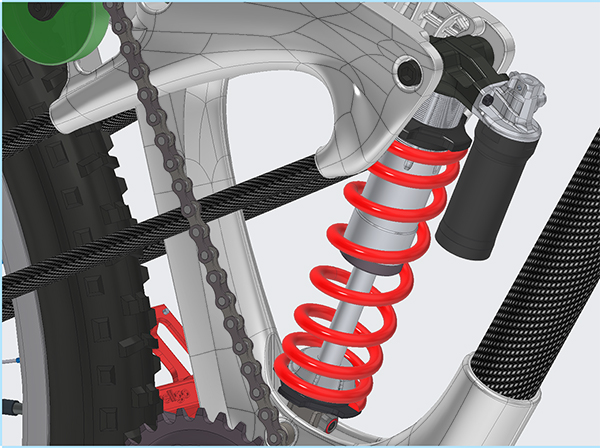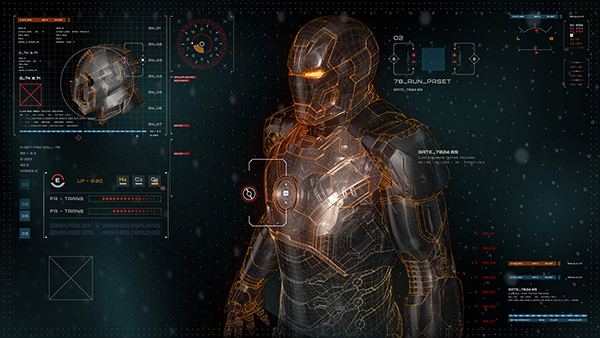CAD communication tools have evolved over the past 60+ years. At Design-engine we call CAD communication tools. From 2D line drawings to 3D CAD tools and in turn, these always placed a demand on the speed and innovation of the computers that operate them. Mainframe first followed by Unix based processors and Windows NT circa 1993 before moving on to Dell Precision mobile workstations.
In the 1960s, large Automotive and Aerospace companies began to develop their own proprietary CAD/CAM systems for internal use. Yamaha had developed a home grown system for product development, as well as Boeing & HP, because there was nothing on the market. IBM even had a parametric sheet metal package in 1985-86 before PTC but they never took to market. Only the most progressive companies had access to computer aided design. It was debatable whether CAD was more productive than traditional techniques as it was all 2-dimensional. Changes to the drawing were so key because the final output was so clean. CATIA started as an in-house development by French aircraft manufacturer, Avions Marcel Dassalt(AMD). That software helped to develop Dassault’s Mirage fighter jet.

History of CAD PLM & FEA
1941 – Hrennikoff and Courant developed mesh discretization methods for solving elasticity and structural analysis problems in civil and aeronautical engineering.
1957 – PRONTO Built by Patrick Hanratty, this was the first commercial numerical-control programming system, sparked everything that is CAD.
1959 – General Motors and IBM build the computer system DAC-1 (Design Augmented by Computers) to facilitate the design of cars.
1960 – William Fetter from Boeing coins the term “computer graphic” for his human factors cockpit drawings.
1960 – Sketchpad Built by Ivan Sutherland, this was the first to ever use a total graphic user interface, users wrote with a light pen on an x-y pointer display, let users constrain properties in a drawing, created the use of “objects” and “instances”.
1965 – NASTRAN (NASA Structural Analysis) is developed as structural analysis solver tool.
1967 – MEDUSA is a CAD program used in the areas of mechanical and plant engineering by manufacturers and Engineering, Procurement and Construction (EPC) companies. The system’s history is closely tied to the beginnings of mainstream CAD and the research culture fostered by Cambridge University and the UK government as well as the resulting transformation of Cambridge into a world-class tech center in the 1980s. Later purchased by PTC with the Computervision purchase in 1998 This tool later evolved into Creo Schematics
1968 – Evans & Southerland founded by David Evans and Ivan Southerland the tools developed into Flight simulators (early VR) Their use in movies and special effects used by all the major news stations of the 80’s. First movie was Tron in 1982 and later all the news channels used this software to create amazing lead-ins to local channel Television. PTC purchased CDRS which was widely used within the AutoMobile industry thru the mid Nineties. CDRS evolved into what is now called Creo Style a module of PTC Creo.
1971 – ADAM Built by Patrick Hanratty, this interactive graphic design, drafting and manufacturing system was written in Fortran and designed to work on virtually every machine, a huge hit that went on to be updated to work on 16 and 32-bit computers, today 80% of CAD programs can be traced back to the roots of ADAM.
1972 – IBM releases VM/CMS mainframe operating system (virtual machine/conversational monitor system). Machines running VM/CMS could be used for batch computing or time-sharing.
1977 – CATIA started as an in-house development by French aircraft manufacturer Avions Marcel Dassalt Dassault’s Mirage fighter jet. The software was later adopted by the aerospace, automotive, shipbuilding, and other industries.
1977: Digital Equipment Corporation (DEC) releases the VAX 11/780 running the 32-bit virtual memory VMS operating system. These machines would be used for batch processing, time-sharing and real time computing. They came with integrated computer networking and standardized methods for calling between programming languages.
1980 – IGES Lets users transfer their 3D designs between CAD software programs, once STEP was released IGES did not get updated further, on its way out but still accepted in many places.
1981 – CATIA by Dassault Systemes – Multi platform CAD software, still in use today. CON: Developers failed to see the value of parametric and were forced by industry to adopt parametric and become a constraint feature based modeler that it is now. Dassault Systems now owns Solidworks & Catia
1982 – SUN Microsystems was founding this year. SUN helped popularize UNIX for scientific computing. Each workstation, which could sit on an engineer’s desk, contained a CPU, a graphics device or terminal and input devices. They were easy to network together to facilitate sharing and access to data and processing. Individual UNIX workstations would ultimately be much more powerful than an entire 11/780 minicomputer.
1982 – The Movie Tron – The first Feature film to use computer graphics The core of our suite of tools was the Evans & Sutherland Picture System (PS2). This was a high-resolution vector graphics machine capable of drawing smooth vector lines in real time on a CRT screen. We had several of these machines, each hosted by its own PDP-11/60 minicomputer (from Digital Equipment Corp.)
1982 – AutoCAD – Developed by Autodesk, this was the first 2D design CAD software made for PCs instead of mainframe computers or minicomputers. DXF was originally introduced in December 1982 as part of AutoCAD 1.0
1983 – Unigraphics II is released by McDonnell Douglas. Sometimes called UG II, this product takes advantage of virtual memory on VMS and AOS/VS operating systems. UG II provides 3d wireframe and surface modeling, associative drafting, finite element analysis and CAM. With UG II and its contemporaries CAD becomes competitive with traditional engineering techniques.
1983 – Alias 3d design software was developed by four Computer scientists: Stephen Bingham, Nigel McGrath, Susan McKenna and David Springer to create an easy-to-use software realistic 3D package to produce realistic 3D graphic models. In 1983, Alias Research was founded at Toronto, Ontario, Canada. Alias unveiled its first product Alias/1 in 1985 at SIGGRAPH ’85 in San Francisco. Initial versions were to be run only on SGIs super-microcomputer using 64-bit Motorola processors and Irix OS, until in the late 90’s when Windows platform could use 64 bit chips. In 2011 Mac versions were launched. The company soon emerged as a premier software product company that produced high-end 3D graphics and surfacing software that is used by the world’s premier entertainment, manufacturing and automobile companies. As used by the auto industry, Alias is capable of creating Class-A surfaces which are surfaces of the highest quality standards. By creating compoundsurfaces that consist of several individual sculptured surface patches, they have perfect surface continuity and correct tolerances that are ready for production.
1984 – the Boeing Company chose CATIA V2 as its main 3D CAD tool, becoming its largest customer.
1986 – ME10 Developed by Hewlett Packard to develop printers and computers, this 2D software evolved from to ME30 a set of 3D tools for design and engineering . Popular in Europe because the tools work so well to modifying STEP and not to worry about constraints. The tool was later re-branded CoCreate. Eventually PTC purchased CoCreate and re-branded the tools as “Direct” or Creo Elements Direct called direct modeling. PTC integrated the technology into Creo Parametric’s Import Data Doctor tools and later more maturely as Flexible Modeling extension of the stock delivery of Creo Parametric.
1987 – MECHANICA was developed by RASNA Corp. Parametric Technology Corporation acquired MECHANICA from Rasna Corporation in 1995 and would incorporate the technology into Pro/ENGINEER (now Creo) as Pro/MECHANICA (it was already an add on module since 1993). Now Creo Simulate or Creo Simulation Live
1987 – Pro/ENGINEER now PTC Creo, this was the first mainstream CAD program utilized parametric constraint solid models, history-based features. This development was the largest development in CAD history because it completely knocked out all the competition, others were written in Fortran and assembler this was written in UNIX’s X-Windows which made it faster and user friendly.
1988 – CATIA V3 was ported from mainframe computers to the Unix platoform.
1998 – John Deere becomes first PTC Pro/ENGINEER customer now branded Creo Parametric.
1992 – Caterpillar becomes the largest PTC customer and the first VAR for PTC. So progressive Caterpillar purchased Pro/ENGINEER for their vendors and trained those suppliers and vendors to use Pro/ENGINEER. The customer’s CAT gave PTC Pro/ENGINEER software to their vendors got a lot more work as a partner with CAT.
1993 – Pro/PROJECT CAD MANAGEMENT PTC’s introduction into the PDM market was Pro/PROJECT primarily created as a library tool for CAD data management where managers could digitally sign off on projects. Evolved into a tool that can manage the entire manufacturing business PTC’s Windchill
1994 – Autodesk AutoCAD R13 With Booliens Helped Autodesk program 3D compatible. Con: fell short of parametric and constraint tools to be any significant compete with the new standards PTC set with Pro/ENGINEER.
1994 – Rhino Beta released and the first release of Rhino 1.0 released in Oct 1998 is now called Rhino3d.
1994 – STEP Took over from IGES as the new format to use when transferring 3D models from one to another, 1994 was the initial release of STEP that made it an international standard for models, still the most used format.
1994 – SolidWorks 95 by Dassault Systems – Made Possible with Windows NT released in July of 1993 Solidworks main focus was on ease of use, Solidworks was released Dec 1994
1995 – VRML (Virtual Reality Modeling Language, pronounced vermal or by its initials, originally—before 1995—known as the Virtual Reality Markup Language) is a standard file format for representing 3-dimensional (3D) interactive vector graphics, designed particularly with the World Wide Web in mind.
1998 – First Release of Rhino 1.0
1998 – PTC purchased CDRS and has evolved into ISDX now branded Creo Style a Class-A surface modeler a module of Creo Parametric.
1999 – Windchill Technology, a Minnesota-based startup co-founded by current PTC CEO, James Heppelmann. Later that year, Parametric shipped Windchill, an internet-based solution for Product Lifecycle Management (PLM) a significant improvement over simply CAD data management only.
2001 – Pro/ENGINEER v2001 was released. With this release ISDX was new created from the Evans & Southerland Purchase of CDRS an automobile industry standard. The Module for for Class-A surfacing ISDX is now branded ‘Creo Style’ and is a must have for product designers and product engineers in consumer market.
2002 – Pro/ENGINEER Wildfire 1.0 with this release we see a shortened workflow and redesign and consolidated UI.
2007 – Grasshopper released for Rhino Sept 2007 Grasshopper is primarily used to build generative algorithms, such as for generative art. ie Shrubs trees and or products of organic form. This iterative design process will generate a certain number of outputs that meet certain constraints, and a designer can later fine tune the feasible region by changing minimal and maximal values to obtain a result not possible otherwise. Many of Grasshopper’s components create 3D geometry that can be machined. Programs may also contain other types of algorithms including numeric, textual, audio-visual and haptic applications. The new Grasshopper environment provides an intuitive way to explore designs without designers having to learn to script.
2008 – Pro/ENGINEER Wildfire 4.0 is released. PTC added the Import Data Doctor that basically added Rhino like tools all inside the edit definition of the STEP or IGES import feature.
2009 – Autodesk Inventor Autodesk’s new direction, tried to be more intuitive and simple, also allowed the creation of complex assemblies. Con: Seams Autodesk failed to integrate Alias or Maya modeling tools and seems to fall short on
2009 – Autodesk Fusion 360 2012 Moved CAD to the cloud with incorporation of Alias Surfacing tools.
2010 – PTC purchased Co-Create a software that was Hewlett Packard’s home grown CAD utility for developing computers and printers. PTC re-branded Creo Elements Direct called direct modeling then integrated into Creo Parametric first into Import Data Doctor tools then as Flexible Modeling extension.
2011 – Creo 1.0 released Significant UI and workflow changes + addition of Sub Divisional or Sub’D for modeling branded as ‘Freestyle’. Offered stock with base package of Creo. Dropped the names Pro/ENGINEER & Wildfire from the brand. Use of a marker menu where users need less the ribbon user interface and instead use a menu on the fly. This on demand UI becomes more prominent with each new release of Creo.
2012 – Onshape Former Solidworks CEO Jon Hirschtick created a new CAD platform for their 3d CAD tools. Like Google docs allows multiple participants to edit a 3d CAD file at the same time.
2013 – Thingworks December PTC made its preliminary Internet of Things acquisition The acquisition of ThingWorx positions PTC as a major player in the emerging Internet of Things era.
2014 – Dassault Systèmes launched 3DEXPERIENCE in order to allow SOLIDWORKS users to jump from a mid range tool into a high end tool such as Catia’s various modals such as Sub Divisional modeling tools.
2014 – PTC acquisition of IoT connectivity management provider Axeda Corporation August 2014
2015 – PTC purchased the Augmented Reality company Vuforia from Qualcomm in November 2015
History of PTC specific
1984 – The Russian immigrant and mathematician Dr. Samuel Geisberg worked at software-design providers Applicon and Computervision
1987 – Pro/ENGINEER v1 released
1998 – John Deere becomes first PTC customer
1989 – PTC went public under the stock ticker PMTC on NASDAQ
1991- Pro/ENGINEER v7 is released
1992 – Caterpillar as a VAR? CAT becomes the largest PTC customer and the first VAR for PTC. So progressive Caterpillar bought Pro/ENGINEER and trained her suppliers and vendors to use Pro/ENGINEER
1992 IndustryWeek named Pro/ENGINEER Technology of the Year.
1993 – Pro/PROJECT released PTC’s first commercial CAD data management tool
1995 – Pro/ENGINEER Release 13 first Sheet metal tool to allow a form feature over a bend and still unforld & unbend.
1995 – Parametric Technology Corporation acquired MECHANICA from Rasna Corporation in and would incorporate the technology into Pro/ENGINEER as Pro/MECHANICA (it was already an add on module since 1993.
1995 – CDRS was purchased by PTC from Evans & Southerland in an effort to break into the Class-A surfacing of the American Automobile market. This tool was integrated into a superfeature ISDX to what is branded as ‘Creo Style’ a module of Creo Parametric for Class-A surfacing.
1998 – PTC acquired Computervision (where Samuel Geisberg worked)
1998 – Pro/ENGINEER v20 was released introducing intent manager and an enhanced UI introduced the Skeleton Part feature created in Assembly mode to enhance the Top Down design workflow of the past.
1999 – Windchill Technology, a Minnesota-based startup co-founded by current PTC CEO, James Heppelmann. Later that year, Parametric shipped Windchill, an internet-based solution for Product Lifecycle Management (PLM) a significant improvement over simply CAD data management only.
2001 – Pro/ENGINEER v2001 was released. With this release ISDX was new created from the Evans & Southerland Purchase of CDRS an automobile industry standard. The Module for for Class-A surfacing ISDX is now branded ‘Creo Style’ and is a must have for product designers and product engineers in consumer market. With this release users were presented with the ability to use a Sketch before the feature.
2002 – Pro/ENGINEER Wildfire 1.0 with this release we see a shortened workflow and redesign UI Not all the modules received the new Wildfire UI but steady with each new release more modules were ‘Wildfireized’.
2003 – IndustryWeek names Pro/ENGINEER “Technology of the Year” for the second time.
2005 – Arbortext was Acquired by PTC a Leading technology and expertise in dynamic publishing that uses exploded views from Creo Parametric drawings managed through Windchill to technical publications persons using Arbortext.
2006 – PTC acquired MathSoft an industry-standard solution for engineering calculations founded in 1984 by Allen Razdow and David Blohm. PTC re-branded this calculation software as ‘Mathcad’
2007 – PTC purchased Co-Create was Hewlett Packard’s home grown Cad utility for developing their computers and printers. PTC re-branded it to Creo Elements Direct. Later it was branded ‘Creo Direct’. The technology for modeling was then integrated into Creo Parametric into both Import Data Doctor tools then as a module called Flexible Modeling.
2008 – Pro/ENGINEER Wildfire 5.0 was released this year
2011 – Creo 1.0 released Jan 6 -More UI and workflow changes + Sub Divisional or Sub’D for short modeling branded as ‘Freestyle’ offered stock with a base package of Creo. Dropped the names Pro/ENGINEER & Wildfire from the brand. Use of a marker menu where users need less the ribbon user interface and instead use a menu on the fly. This on-demand UI becomes more prominent with each new release of Creo.

2012 – Creo 2.0 is released.
2013 – Thingworks December PTC made its preliminary Internet of Things acquisition The acquisition of ThingWorx positions PTC as a major player in the emerging Internet of Things era.
2014 – PTC acquisition of IoT connectivity management provider Axeda Corporation August 2014,
2015 – Creo 4.0 was released
2015 – PTC purchased the Augmented Reality company Vuforia from Qualcomm in November 2015
2017 – PTC announced pricing would change to yearly subscription.
2018 – Rockwell Automation invested into PTC
2018 – PTC acquired Waypoint Labs in April to further solidify their position in the Augmented Reality space.
2018 – PTC purchases Frustum to obtain their Generative Design Technology. Integration slated in Creo 7.0 for March 2020
2019 – Creo 6.0 released in March of 2019

The Future: & future of CAD tools
The future will be all about automation, data visualization(Windchill), artificial intelligence(AI), vertical reality(VR) and artificial reality(AR). The hive can learn in ways humans can not. Autonomous cars learn from all the other cars who had previously passed that route with the expectation of higher safety standards and better fuel consumption. We are already seeing the automation of rockets landing safely from space on their own thanks to innovators like Elon Musk. Government funded programs such as DARPA ensure the testing new technologies example of Autonomis racing in Nevada.
Robotics has been apart of Automation since the early 1990’s and it is only inevitable that autonomous robots of many forms will take many jobs from humans. From Boston Robotics helping infantry in battle to semi autonomous drones helping with air strikes to robots stacking boxes to Amazon automation warehousing to painting robots at GM to finally Parametric technology developing tools for engineers that assist developing shapes, forms for manufacturing to 3d printing ultimately to optimize for heat loss, strength and optimize weight. It may be only be artificial assist working with engineers that computers with artificial intelligence takes over last.. With software like this was called behavioral modeling maturing with the assistance of live FEA software solving with variables, one thing is true. The engineer who embraces new technology will never be without a job.
The future of CAD is all about ease of use and the artificial assist was behavioral modeling where mealtime FEA tools solve stresses, vibration and heat loss by optimizing form specific to a manufacturing process including 3d printing. Managers need to encourage a more effective team by sending people in groups to training. In this way they are encouraging a teamed approach to product design. “I surface modeled it, Can you run the live analysis to optimize these variables?” At Design-engine we always encourage people to sell the team.

Future Specific to Creo Windchill
Specific changes to Creo we may see or wish to encourage or we may see in the near future?
Software Automation to enhance design: Automation occurs at the software level as well. Call it behavioral modeling artificial assist, PTC has been leading this for 10+ years. Coupled w/ various types of manufacturing vs 3d printing. That technology is here now. how will this evolve?
Sketcher mode: Creo competitors most have simple versions of Creo Parametric sketcher mode not to mention an intent manager. I foresee being able to train your version of your sketcher mode to recall approximately how you like to dimension sketches.
Artificial guess work: Ever notice how Creo Parametric seems to often guess the opposite of what you want? Maybe our future tools will error using a simple AI to guess towards more mass of your model. Now we have Creo guessing more accurately.
Holographic Windchill – like when Tony Stark reaches up and replaces parts on the Iron Man suit (configurations pro program and windchill)

Topology Optimization – Where will Topology optimization going? What do you see as PTC’s next step in the development of that tool?
Cloud – two people can edit one file at the same time like a google document?
Generative Design – How will this evolve as a tool in our near future?
What are your ideas for the future of CAD? email me bart@designengine.com
Want to see covereage of this talk at COPUG 2019? Check out the video here!


